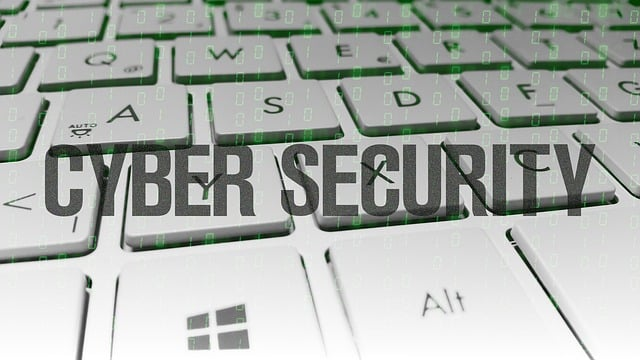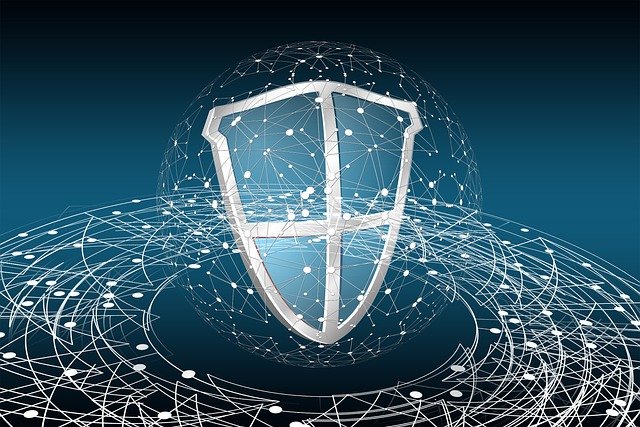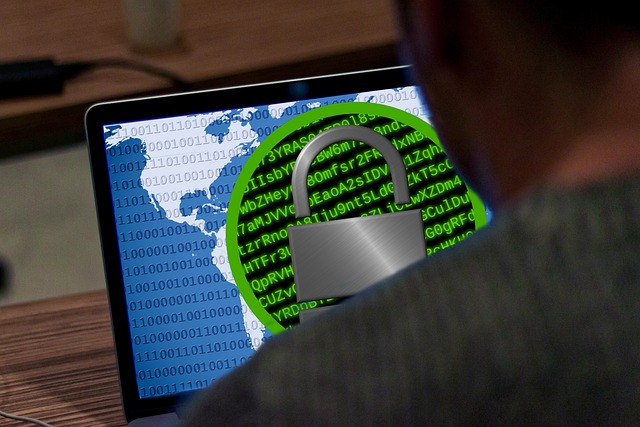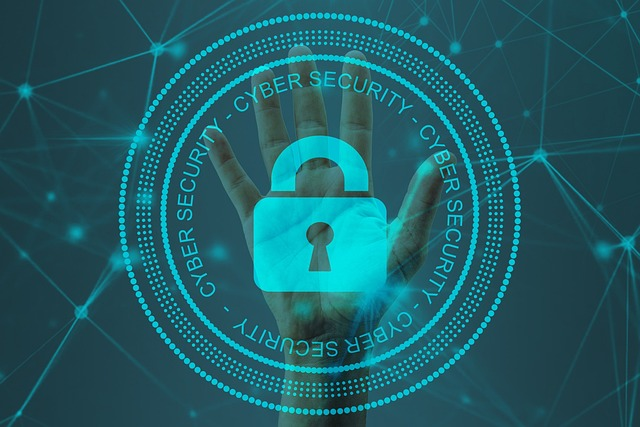Managed Detection and Response (MDR) goes by a variety of names like Endpoint Detection and Response (EDR), or maybe even XDR. Sure, the technologies may vary a bit, but the common denominator is that MDR will help your organization with proactive threat detection and response.
At Cybriant, we call our MDR service Managed Detection and Remediation because our team will work with you to help remediate any issues that are found during the MDR process.
MDR is an outsourced managed security service that provides advanced protection on endpoints. MDR provides more advanced and deeper detection plus the ability to stop malware in its tracks. Typically, MDR uses AI and machine learning for deeper security analysis.
What is the difference between EDR and MDR?
We go into detail about the difference between EDR and MDR in a previous blog post. See more details here but here are some highlights:
You may have noticed that we recently launched an MDR service: Managed Detection and Remediation – formerly known as Managed EDR. The reason for this change is because our services offer a much more in-depth remediation aspect than a traditional EDR or Endpoint Detection and Response service.
What is Managed EDR?
EDR is typically considered next-generation antivirus that is focused on endpoints or hosts. EDR depends on a software agent that is installed on the endpoint and sends information to a centralized database for analysis. As a Managed EDR, our team would analyze your data and potentially stop any malware threats.
EDR was an excellent progression from antivirus because you could record and store user behaviors and events on endpoints. Plus, with a managed service, if a user clicked on a phishing email, we stopped malware before it could execute.
While the service is still very similar, we consider EDR the “Lite” version of MDR. Take a look and consider why MDR might be right for you.

What is Managed Detection and Remediation?
We’ve taken EDR to the next level so we not only detect intrusions malware, and malicious activity on your network, we will assist you to eliminate and mitigate those threats. It is vital that we include a small piece of software on every device you would like track, but the software we use is lightest available. Your users won’t even know it’s there.
The software is important but the most vital part of our MDR service is the team of analysts that watch your network 24/7. We eliminate false positives and identify real security threats. Our team reduces the time to detection to hours if not minutes. Plus, we help you mediate and remove the threat.
The point of our upgraded version of EDR is that remediation is essential to your organization’s cybersecurity success. Sure, it’s great if you are aware of the threats to your network, but what do you do about it? Our team of security experts (that is watching your network on a 24/7 basis) not only alerts you to any threats, but they also walk you through the remediation process.
See what our clients have to say about us on G2 Crowd.
What is MDR?
Managed detection and response (MDR) is a security service that combines advanced threat detection, network traffic analysis, and security expertise to help organizations proactively defend against cyber threats.
MDR services are typically delivered by a team of security analysts who use a combination of advanced tools and techniques to detect, investigate, and respond to threats in real time.
Finding the best Managed Detection and Response company that fits your organization is complex. Companies must consider a variety of factors such as – the provider’s capabilities, pricing structure log management,, customer support, and track record in the industry.

In order to select the right MDR provider for your organization, it is important to understand what services they offer and how well they meet your needs. When evaluating potential providers, ask questions about their capabilities and any additional features they offer. Also, inquire about the provider’s experience in the industry and customer support services.
Understanding pricing structures and comparing costs across different MDR providers is also important. Generally speaking, most MDR vendors charge a fee for a set number of hours or perincident response service. Additionally, some providers offer discounts for long-term contracts. Make sure to explore all options and select the one that best fits your organization’s budget and security needs.
Lastly, investigate a provider’s track record in the industry by reading case studies, and customer reviews, and interviewing previous clients. This will give you an idea of their services’ reliability and effectiveness. Ultimately, by choosing the right MDR provider, organizations can enhance their security posture and minimize the impact of potential cyber threats. One of the key benefits of MDR is that it can help organizations improve their overall security posture by providing 24/7 monitoring and actionable intelligence about potential threats.
In addition, MDR services can also help organizations save time and money by reducing the need for in-house security staff. As the demand for MDR services continues to grow, more and more security providers are offering MDR as a standalone service or as part of a comprehensive security package.

Why Choose MDR Security?
Do you need a Managed Detection and Response (MDR) service? Isn’t antivirus enough to protect your endpoints? Here are some questions to ask yourself in the process of deciding if MDR is right for you:
- Do you have a way to detect malicious executables before they run and if they are bad prevent them from executing?
- How are you currently controlling how scripts are used in your environment?
- Are you prepared to protect yourself from fileless malware attacks?
- How are you protecting yourself from phishing attacks?
- Are you prepared to defend your business against a malicious USB or an insider attempting to exfiltrate data?
- How quickly can you respond to a security incident?
- How do you validate suspicious activity on your endpoints?
- Are you currently using your real attack data to improve your overall security posture?
- What tools do you have in place to investigate endpoints?
- Can you search for historical information about your endpoints?
- Are you able to use indicators of compromise to root out threats on your endpoints?
- Do you have a way to detect threats automatically?
Drop us a note if you have any questions about the responses you have to these questions. Learn more about “What is Managed EDR Security?” here.
How MDR Works
Managed detection and response (MDR) is a service that allows organizations to outsource their security monitoring, threat detection, and response activities. When it comes to addressing the sophisticated threats posed by today’s advanced persistent threats (APTs), MDR provides an additional layer of protection—one that can be crucial for protecting against potential data loss or system damage.
MDR services generally involve a combination of technology, processes, and people. On the technology side, an MDR service provider typically includes access to sophisticated security toolsdesigned to detect malicious activity such as malware infiltration or unauthorized data access. These tools may include intrusion detection systems (IDS), firewalls, network monitoring devices, and security analytics platforms.
Processes are also critical to MDR. Companies providing MDR services typically use a combination of automation and human analysis to investigate suspicious activity. Automation is used to detect anomalies in traffic, while humans analyze the data and decide if further investigation is needed.
Finally, people are essential for managing an effective MDR program. The company providing MDR services should have personnel with expertise in the security field, as well as experience responding to potential threats.

Managed Detection and Response Services
Managed detection and response services have become an increasingly popular option for organizations looking to bolster their security posture in the face of sophisticated cyber threats.MDR services can provide several benefits, including 24/7 monitoring, actionable intelligence, and improved overall security posture.
A strong MDR solution will have the following features:
Proactive Threat Hunting
Proactive threat hunting is a key component of MDR services. Threat hunting is the process of proactively searching for signs of malicious activity that may not be immediately apparent.
Threat hunting and threat research can help organizations improve their overall security posture by identifying potential threats early and taking steps to mitigate them. In addition, threat hunting can also help organizations save time and money by reducing the need for reactive security measures.
Network Traffic Analysis
Network traffic analysis is another key component of MDR services. Network traffic analysis involves monitoring and analyzing network traffic for signs of malicious activity.
Network traffic analysis can help organizations identify potential threats early and take steps to mitigate them. In addition, network traffic analysis can also help organizations improve their overall security posture by using vulnerability scanning providing insights into the behavior of attackers.
Advanced Threat Detection
Advanced threat detection is a key component of MDR services. Advanced threat detection involves the use of advanced tools and techniques to detect, investigate, and respond to threats.
Advanced threat detection can help organizations improve their overall security posture by providing 24/7 monitoring and actionable intelligence about potential threats. In addition, advanced threat detection can also help organizations save time and money by reducing the need for in-house security staff

Managed Detection and Remediation Benefits
When you outsource the management of your Managed Detection and Remediation (MDR) to Cybriant, our security analysts can:
- Perform root cause analysis for any blocked threat or any other artifact deemed important found on an endpoint
- Proactively search endpoints for signs of threats commonly referred to as threat hunting
- Take decisive action when a security incident, or potentialincident, is identified
Suspicious Activity Validation
Cybriant uses AI-based threat prevention, running locally on your endpoint, that has a field-proven record of preventing well over 99% of threats, both known and unknown, from executing on your endpoint, without signatures, cloud lookups, or significant impact on your endpoint.
Using AI, we can stop bad executables before they can hurt your business. Time is of the essence when it comes to a security incident. Our analysts can decisive action when a security incident is identified or a threat needs to be mitigated.
Our analysts can immediately investigate any endpoint in your environment to determine if the activity is malicious. Real attack data is an invaluable source of intelligence for your security team. Without deploying sandbox technology, our analysts can get a glimpse into the mind of the attacker and how they try to compromise your endpoint.
Threat Hunting and Suspicious Activity Detection
Using AI, our analysts will stamp out a potential compromise before it has the chance to harm. Along with a curated set of forensically relevant data on your endpoints, You also get script control, memory protection, application control, and device usage management to block additional threat vectors.
Is MDR right for you?

Managed Detection Response
MDR, or Managed Detection and Response, is a comprehensive security solution that helps organizations detect, investigate, and respond to cybersecurity threats. While traditional security solutions focus on identifying and blocking known threats, MDR takes a proactive approach cloud security that uses advanced analytics and machine learning to identify both known and unknown threats.
This approach is designed to help organizations stay one step ahead of the ever-evolving cybersecurity landscape.
In addition to offering 24/7 monitoring and threat detection, MDR services also include incident response support from a team of experienced security experts.
This team can guide how to best mitigate the impact of a security incident and help prevent future attacks. For businesses of all sizes, MDR and internal security team can be an invaluable tool in the fight against cybercrime.
Managed Detection and Response
Managed detection and response (MDR) services are a type of security solution that proactively uses advanced analytics and machine learning to detect both known and unknown threats. MDR services include 24/7 monitoring, threat detection, and incident response support from a team of experienced security experts. MDR can be an invaluable tool in the fight against cybercrime for businesses of all sizes
Managed detection and response services from Cybriant can help your business by:
- Proactively identifying and investigating potential security threats
- Mitigating the impact of a security incident
- Preventing future attacks
- Providing round-the-clock support from experienced security experts
MDR vs. SIEM
Managed Detection and Response (MDR) and SIEM are different solutions but they are complementary to each other and work well together, especially in a managed solution – we have a service called CybriantXDR that uses both as well as vulnerability management.
A SIEM that is performing at peak performance should outperform MDR in detection. Detection is the key to SIEM. It’s important to have a team that can help respond to any problem that is detected. A SIEM can be deemed pointless if it is only noise and you aren’t able to respond to any potential threats.
An MDR should outperform a SIEM in prevention. MDR is designed for endpoint prevention and analysis. But both MDR and SIEM require staff training, tuning, and maintenance
However, the distinctions between the two blur their common purpose and obscure the importance of a holistic cybersecurity platform in the enterprise network and cloud environments. Cybersecurity solutions perform optimally when they integrate effectively with each other and utilize their different capabilities.
Managed Detection and Response Market Guide
As the Managed Detection and Response market continues to grow, it is crucial for businesses to have a comprehensive guide to select the right provider. This guide should consider factors such as capabilities, pricing, customer support, and track record in the industry. By choosing the right Managed Detection & Response provider, businesses can enhance their security posture and minimize the impact of potential cyber threats.

Managed Detection & Response History
Managed Detection and Response (MDR) is a relatively new concept that has emerged as a critical cybersecurity service in recent years. It has become increasingly essential for organizations to take proactive measures to detect and respond to security incidents due to the skyrocketing cyber attacks that target sensitive data and systems.
The MDR market first emerged in response to the increasing sophistication of cyber attacks and the persistent shortage of in-house cybersecurity resources. Traditional security measures like antivirus software, firewalls, and intrusion detection systems were no longer enough to combat the new wave of threats targeting organizations. This led to the development of MDR, a proactive cybersecurity service that combines advanced technology, data analytics and human expertise to detect and respond to threats quickly and efficiently.
MDR service providers leverage security information and event management (SIEM) systems, advanced analytics, threat intelligence, and a team of dedicated security experts to monitor and investigate security incidents. They typically offer around-the-clock monitoring and threat detection, incident response services, and remediation support.
As the MDR market continues to evolve, more businesses are recognizing its value in enhancing their security posture and protecting against cyber threats. The market is projected to grow significantly in the coming years as organizations increasingly recognize the importance of a proactive security approach to safeguard sensitive data and systems. With the right MDR provider, organizations can minimize the impact of security incidents and protect their brand reputation, customers, and bottom line.
Managed Security Service Providers
MSSPs like Cybriant work hand in hand with security teams to monitor your systems for advanced threats. We can help target your evolving threat landscape for your security operations. Finally, while the technology you choose is incredibly important, having an added layer of human expertise can be a game-changer.
At Cybriant, we strive to provide our clients with the best possible managed security services experience. Our team of experts is available 24/7 to monitor and respond to cyber threats quickly and effectively. We leverage cutting-edge technology and threat intelligence to detect and contain malicious activity, protecting your data, systems, brand reputation, and bottom line.
Endpoint Threat Detection
Endpoint Threat Detection (ETD) is an important part of any MDR program. By utilizing specialized tools and techniques, ETD can help detect suspicious behavior at the endpoint level before it reaches the network or threatens data security operations. With advanced technologies such as user and entity behavior analytics (UEBA) and artificial intelligence (AI), organizations can monitor user activities and detect threats that might otherwise go unnoticed.
Outsourcing ETD to supplement a company’s security operations center (SOC) can help organizations quickly respond to threats and prevent costly incidents from occurring. By monitoring user activity and suspicious behavior, ETD can detect potential attacks before they become serious issues. This allows businesses to take action on cybersecurity incidents immediately, reducing the risk of data loss or other damages due to malicious actors.

MDR as an Endpoint Security Solution
MDR is a powerful tool for businesses in need of endpoint security solutions. With MDR, companies can protect their data from malicious actors with the help of advanced ETD solutions that detect and contain suspicious activities before they become full-blown incidents. This gives organizations the best chance at preventing serious security events, breaches and data loss while continuing to focus on other operations without compromising their security.
MDR gives organizations an extra layer of security that can improve their overall security posture and make them less vulnerable to malicious attacks. With MDR, businesses can detect and analyze threats before they become serious incidents, reducing the time it takes to respond to and mitigate a breach. This helps ensure that companies have the best chance of preventing data loss or other forms of damage caused by malicious actors.
MDR also has the advantage of being able to detect potential threats from both known and unknown sources, giving organizations an even greater level of protection. By leveraging artificial intelligence and machine learning algorithms, MDR solutions can detect suspicious activities quickly and accurately, allowing businesses to take the proper steps to remediate any potential issues in a timely manner.
How to Find a Managed Detection and Response Provider
Finding the best Managed Detection and Response company that fits your organization is complex. Companies must consider a variety of factors such as – the provider’s capabilities, pricing structure, customer support, and track record in the industry.
In order to select the right MDR provider for your organization, it is important to understand what services they offer and how well they meet your needs. When evaluating potential providers, ask questions about their capabilities and any additional features they offer. Also, inquire about the provider’s experience in the industry and customer support services.
Understanding pricing structures and comparing costs across different MDR providers is also important. Generally speaking, most MDR vendors charge a fee for a set number of hours or per incident response service. Additionally, some providers offer discounts for long-term contracts. Make sure to explore all options and select the one that best fits your organization’s budget and security needs.
Lastly, investigate a provider’s track record in the industry by reading case studies, and customer reviews, and interviewing previous clients. This will give you an idea of their services’ reliability and effectiveness. Ultimately, by choosing the right MDR provider, organizations can enhance their security posture and minimize the impact of potential cyber threats.
Why Choose Cybriant as Your MDR Vendor
Here are 7 great reasons to choose Cybriant as your Managed Detection and Response vendor
#1. Discover what traditional Antivirus has missed
Many organizations are not comfortable removing their antivirus product completely. Very often, clients will utilize Managed Detection and Response (MDR) security services to determine just how much their current AV has missed. You’ll have the ability to detect and prevent hidden exploit processes that are more complex than a simple signature or pattern and evade traditional antivirus.
#2. Improved Threat Intelligence with AI
It’s possible to use the power of artificial intelligence (AI) to block malware infections with additional security controls that safeguard against script-based, fileless, memory, and external device-based attacks. Unlike traditional endpoint security products that rely on signatures and behavior analysis to detect threats in the environment, our MDR platform uses AI, not signatures, to both identify threats and block known and unknown malware from running on endpoints.
#3. Increased visibility throughout endpoints.
With MDR security, we can detect malicious activities and simplify security incident response on endpoints including applications, processes, and communications. It’s possible to stop attacks before they cause harm, vs allowing attacks to happen, then clean up the mess.
#4. Alerts and defensive responses when an actual threat is detected
When you work with Cybriant, our analysts can immediately investigate any endpoint in your environment to determine if the activity is malicious. Real attack data is an invaluable source of intelligence for your security team. Without deploying sandbox technology, our analysts can get a glimpse into the mind of the attacker and how they try to compromise your endpoint.
#5. Forensic capabilities
Once an attacker is inside, you need the ability to take a deep dive into their activities, so you can understand their movements and minimize the impact of the breach. When sensitive data has been compromised, the livelihood of your business is at stake. The longer it takes to discover and remediate the cause of a breach, the greater the chance of damage to the company’s reputation and business operations. To limit the amount of exposure and prevent further breaches, organizations need a forensic team dedicated to piecing together any evidence and understanding the scope of the breach.
#6. Data collection to build a repository for analytics
With MDR security, you have a team of endpoint security experts not only utilizing next-generation tools on your behalf but also feeding back information to your organization on how to respond to alerts. Our security team brings together endpoint analysts, incident responders, forensics experts, and security engineers. They understand what normal endpoint activity should look like, when a more thorough investigation is required when to raise the alarm, and how to respond.
#7. Consolidated Endpoint Security Efforts
Endpoint security has evolved over the decades into several reactive technologies to attempt to stay ahead of the constantly changing threat landscape and provide protection, but today a new kind of endpoint security technology can help reduce the number of overall technologies deployed on the endpoint. The use of artificial intelligence to protect the endpoint is enabling organizations to reduce their deployed technologies because the effectiveness rate is so superior to traditional signature-based security.
How many different security technologies are deployed on your users’ endpoints? How many full-time employees does it take to manage those technologies? By reducing the number of layers of security on your endpoints, you’ll find that you see an improved level of security. Deploying more technology or software on the endpoint will have an impact on system performance.
Traditional endpoint security solutions utilize massive amounts of CPU (50-70%) and memory (100s of MB). As a result, end-user productivity is heavily impacted. On average, if an employee loses 10 minutes a day due to slow PC performance caused by traditional endpoint security, over a year the loss in productivity equals about $1,000 per employee. By using a low-footprint solution and outsourcing the management of that EDR security solution, you are improving the security as well as the user experience.



